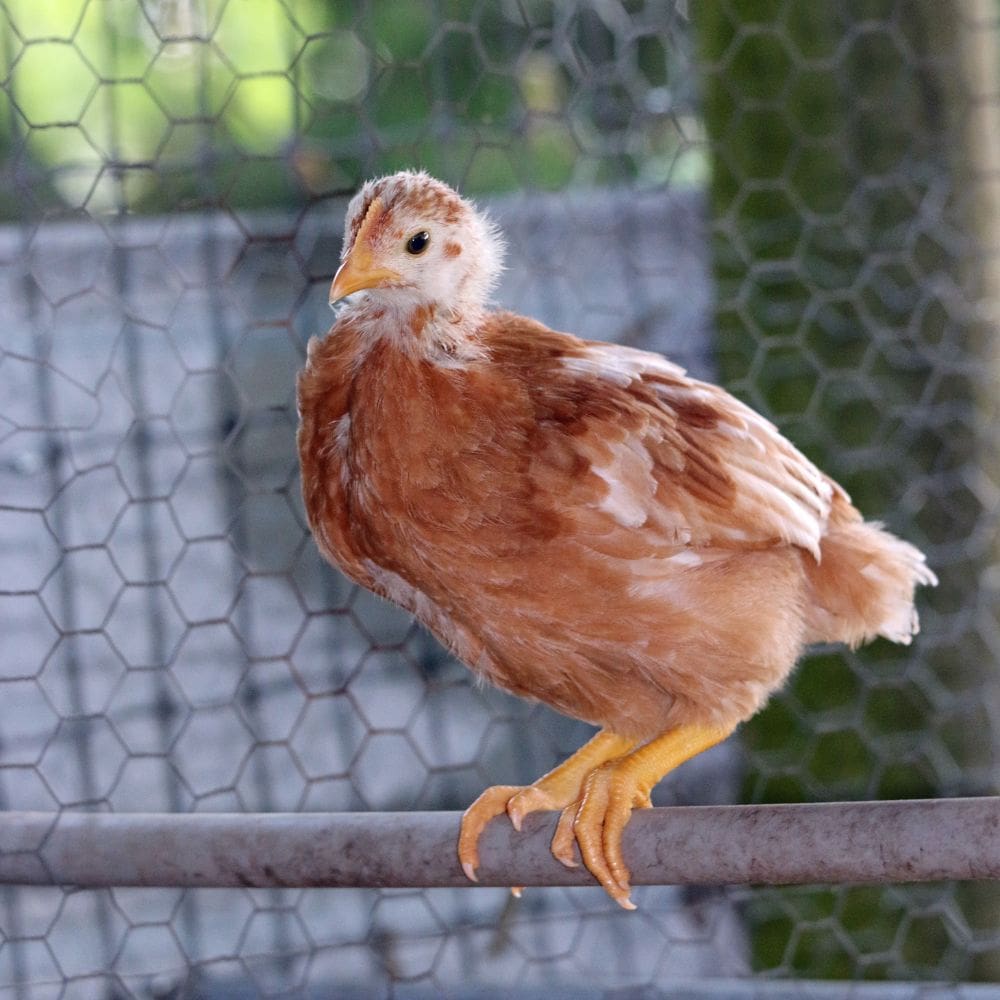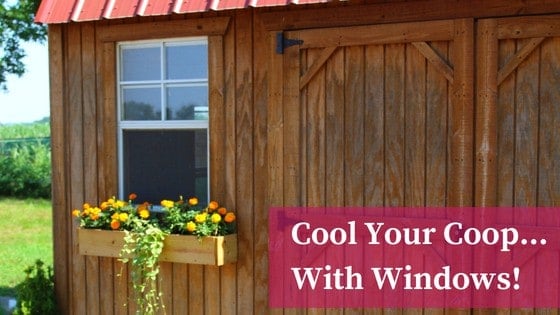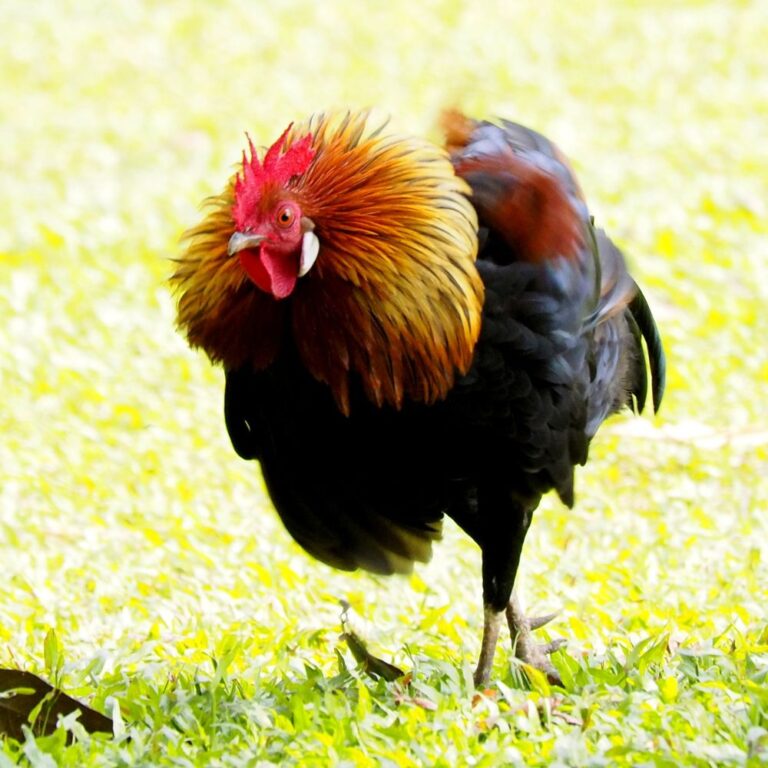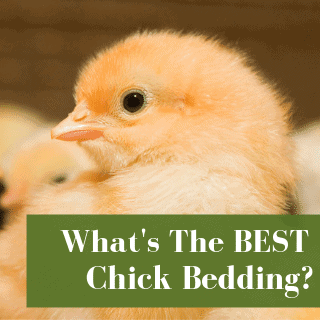Wondering “When do chicks roost?”
Full-grown chickens look most at home when they’re roosting, don’t they? Roosting is when chickens settle in on a roost to rest safely.
It’s an important part of their lives because it symbolizes an authentic feeling of security, which, for a prey animal, is very important. Chickens don’t start out their lives roosting, though.
Keep reading to learn more. Also, be sure to catch the video about this (below).

Table of Contents (Quickly Jump To Information)
What Exactly Is Roosting?
The phrase “roosting bars” is often exchanged with “chicken perches”. Are they the same thing? Yes, they are. Technically a chicken perches on a roosting bar, or at least that is the most common terminology used.
Some folks may say that when a chicken perches, it’s outside of the coop on a tree limb or fence for resting or watching…and when they go up for the night they roost.
Either way, you get the point (and we’ll just say the terminology is interchangeable). Chickens aren’t ground dwellers. It’s an internal drive – a need – to roost. Many call it natural instincts. They WILL roost at night (with few exceptions). Generally speaking, if you don’t provide a roosting bar for them they will roost on whatever they can find (even if it doesn’t seem appropriate or comfortable).
Maybe you can just call it a roosting perch. 😊
They’ll Roost When They’re Ready
The true answer to this question is that your chicks will roost when they’re ready to roost. But we can talk about the different stages that chicks go through when it comes to roosting.
Chickens roost in order to be safe. It’s an instinctual thing that a lot of different birds do, so they’ll naturally start to do it when they’re ready.
What’s Feathers Got To Do With It?
On our farm, we have noticed that different breeds of chicks will start to roost at different times and at different ages. Generally speaking, we have found that they start to roost at around 8 to 12 weeks.
The reason for that is that when they’re chicks, they naturally want to huddle together in a clump on the floor, which is how they stay safe. If you think about it, in the wild they want to cluster under their mother. Since the mothers are generally on the floor, that’s where they’ll cluster. (Which is one reason I don’t think chicks need their mother hens.)
When they’re chicks, they are covered in down, which is not really feathers. Chickens can’t get up onto anything unless they jump on it, so only once they start to develop feathers will they start to actually roost. Even then, I’ve found that it takes them until that 8- to 12-week mark.
When Feathers Appear
You might notice that, even at maybe two weeks, when they start to get their wing feathers, the chicks will start to want to roost if given the option. This happens even in your brooders.
Will they roost up high like adults? No, but they might roost maybe 18 inches off the ground, and that just shows that it’s an instinctual thing for them. You don’t have to train them for this. They’re going to do it naturally.
Learning By Example
In our coop, we start integrating baby chicks into the coop at around 10 weeks. By this time, they usually have all their feathers. If they don’t, they still sit on the ground, but they’re watching the adults roost.
These youngsters start to get the picture that, “Oh, that’s what I’m supposed to do as a chicken.” But really until they get the feathers, they’re usually not going to start doing that.
Not Roosting?
If you find that your chickens aren’t roosting despite having feathers and despite being the right age, ask yourself some questions:
- What do you have in there for them to roost on?
- Is there anything driving them away from it?
An example might be that you don’t have roosting bars at all, or what you have provided is too thin. Chickens are not going to roost on little twigs. You want their roost to be about two inches wide. That’s more comfortable for them.
Some folks use an old wood ladder and chickens seem to love these. Just be sure it’s wood and not metal.
But let’s just say your roosts are perfectly fine and your chicks are not using them. Then ask yourself;
- Is the roost too high?
- Is the roost too crowded?
- Is there something about the roost that’s deterring them (such as vermin crawling on them)?
Let’s say mice can get onto it and are scuttling around at night; your chickens aren’t going to want to roost on that. Or there isn’t enough room for another chicken to fly up and get then get situated without causing chaos.
Those are just some questions to ask.
Here is an article that will provide further help: Chicken Perches – All About Roosting Rituals.
Roosting Materials
As stated before, roosting is very important, and making sure your coop has higher places for your chickens to sleep is a step towards making it 100% predator proof.
As for roosting material, we personally go for the natural type of roost. We might use sticks from outside, larger logs, for example. We also make swings out of those pieces of wood, or we might use a two-by-four. Just be sure they an’t get splinters and that the diameter is sufficient for comfortable roosting.
You can buy commercial roosts. We’ve never actually used them because we found that free logs seem to work fine for us.
Roosting Tips
- It’s best to have roosting bars in an area that is not over or under your nesting boxes. Simply put if they are over the nesting boxes they will poop all over the boxes. If they are under the boxes, flock members will be encouraged to roost IN the boxes (and poop all over the inside).
- Pecking order can also play a role. Some bossy flossy might not allow a certain chicken to roost. You might have to intervene or provide another roosting area.
- You may wonder why it matters if your chickens roost, especially if they are safely locked up in a coop at night. The quick answer is that chickens huddled together on the bacteria covered floor are more likely to get an infection, lice and mites, and other parasites.
- It’s imperative that there is plenty of room for all the chickens to hop up and roost. If there is not, then some will be forced to huddle on the floor. In the summer they will need extra space on the roosting bars so they don’t get too hot. In the winter they will roost close together to produce warmth.
Summary
As you can see, when your flock is good and ready, they will roost (at least most of the time). Be sure your coop is comfortable and your roosting “bars” are adequate (including enough roosting space). It’s a pretty natural drive for chickens to roost (even for backyard chickens), and as long as you have these simple things in place, you likely won’t have to worry about a thing.
Additional reading
- Country Chic Chicken Coops To Deter Predators
- Chicken Nesting Boxes: Owner’s Guide
- Chicken Guard Automatic Coop Door Review
- Chicken Perches – All About Roosting Rituals
- Why Won’t My Hens Use Their Nesting Boxes?
- Chicken Feather Loss – Grow Feathers Back Fast
Maat van Uitert is a backyard chicken and sustainable living expert. She is also the author of Chickens: Naturally Raising A Sustainable Flock, which was a best seller in it’s Amazon category. Maat has been featured on NBC, CBS, AOL Finance, Community Chickens, the Huffington Post, Chickens magazine, Backyard Poultry, and Countryside Magazine. She lives on her farm in Southeast Missouri with her husband, two children, and about a million chickens and ducks. You can follow Maat on Facebook here and Instagram here.





![Can I Keep Chicks In The House? What Killed My Chicks?, Are Heatlamps Necessary? Why Do Chickens Roll? Do Chicks Need Nesting Box Training? [Podcast]](https://thefrugalchicken.com/wp-content/uploads/2016/03/chicks-heat-lamps-feature-min.jpg)

always good information.can the chickens eat culiflower leaves?
Yes, but they might not like them!